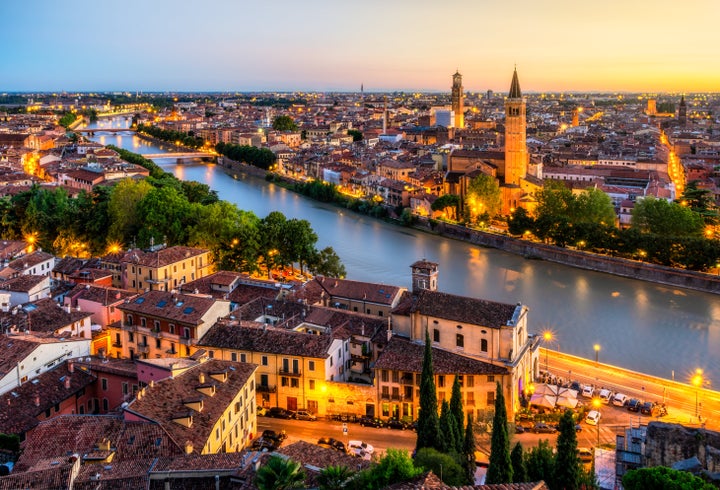As we approach the summer travel season, many people will soon be jetting off to iconic destinations like Rome, Paris, Tokyo and New York City.
These cities are popular for a reason ― they’re full of fun attractions, delicious food and picturesque sites. But visitors to such hot spots can also expect massive crowds and peak prices.
There is, however, another way to explore exciting destinations without those drawbacks. It’s called “second city” travel. But what exactly is it and how do you take full advantage of this kind of trip? Below, travel experts break it down.
What is a “second city” trip?
“Second-city travel means skipping the most popular city or region in an area and visiting the second-, third-, or fourth- (and so on) most-known spots,” said Phil Dengler, co-founder of The Vacationer. “Ultimately, you are avoiding the traditional and known tourist destinations that are often overcrowded. Instead of visiting Miami, you could visit Fort Lauderdale or Palm Beach.”
Although the literal meaning of the term refers to a country’s second most famous or populous city, it has indeed expanded to refer more generally to lesser-known destinations. Over the years, some have also interpreted “second city” travel to mean tacking on one of these less popular destinations to a trip built around a classic spot like Rome.
“Often it’s the smaller, lesser known city in a region,” said Laura Lindsay, a travel trends and destinations expert at Skyscanner. “For example, in Southern California, San Diego would be considered a ‘second city’ and Los Angeles a primary city and on the East Coast, Boston would be the ‘second city’ and New York City the primary city.”
“Second cities” might not be the most obvious choices for tourists, but these more under-the-radar destinations can still offer enough attractions, food and cultural experiences to make for a wonderful vacation.

What are the benefits of second city travel?
“Second cities often have fewer crowds, are cheaper, and offer a more authentic experience,” Dengler said. “While places like New York City have a ton to offer, they can often feel hollow and inauthentic with tourist attractions at every corner.”
In addition to the affordability and greater sense of calm, second cities can also provide a special charm and more unique travel experience.
“The main benefit of second city travel is discovering hidden gems and off-the-beaten path locations,” said Ravi Roth, a travel expert and host of “The Gaycation Travel Show.” “I recently traveled to Italy and Venice, and took an hour train ride to Verona, which offers incredible food, landmarks and hidden gems. The best part was that it wasn’t overly populated.”
Visiting a destination that isn’t overrun with tourists allows travelers to better interact with the community that lives there.
“These trips can provide opportunities to connect with locals and become immersed in the culture, which leads to a deeper understanding of the city,” said Gordon Gurnik, chief operating officer at Hilton Grand Vacations.
Drawing from Skyscanner data, Lindsay noted that smaller island or coastal destinations like Crete, Mallorca and Cancun are attractive options for travelers looking to visit Greece, Spain or Mexico.
“Understated second cities definitely don’t stand in the shadows of their more showy neighbors,” she said. “Often packed with local flair, amazing food, great value and a more laid-back pace, second cities are not to be missed.”
In this era of overtourism, turning to second city trips also help mitigate the negative impact that the travel industry can have on the environment.
“We have seen a rise in people looking for ways to make tourism more sustainable,” said travel blogger Rocky Trifari. “The second cities trend helps reduce the heavy burden on the most frequently visited cities while opening up the possibility for tourists to walk a path (slightly) less traveled!”
How can you plan a top-notch second city trip?
“When planning a second city trip, I recommend researching the most populous places within driving distance of the top one,” Dengler advised. “Doing that betters your odds of being able to fly into an international airport, which are often cheaper and have better routes than regional ones.”
Indeed, a drawback of second cities is that they sometimes require a more expensive or inconvenient combination of planes, trains and automobiles to get there. Be mindful of transportation options as you choose a destination.
“The biggest con to second city travel is that the most popular city is the most popular for a reason,” added travel blogger Sean Lau. “Chances are, you might miss some of the most iconic landmarks and attractions of a destination by going to the ‘second city’ instead.”
But even if you aren’t seeing a country or state’s classic sites, you can still have a fulfilling and exciting experience in your second city of choice.
“Pick a place that has enough things for you to do and consider booking a room at a smaller boutique hotel or bed and breakfast,” Dengler said.
Wherever you decide to go, make sure to do your research ahead of time.
“‘Second cities’ are sometimes not as developed as the ‘main’ city, especially if you are not in a very developed country,” Lau noted. “This might mean you’ll need to rent your own car to get around, or this might mean you need to avoid certain neighborhoods because they are potentially dangerous. And if you are visiting a foreign country where English is not common, the ‘second city’ might require you to know a little bit of the local language.”
